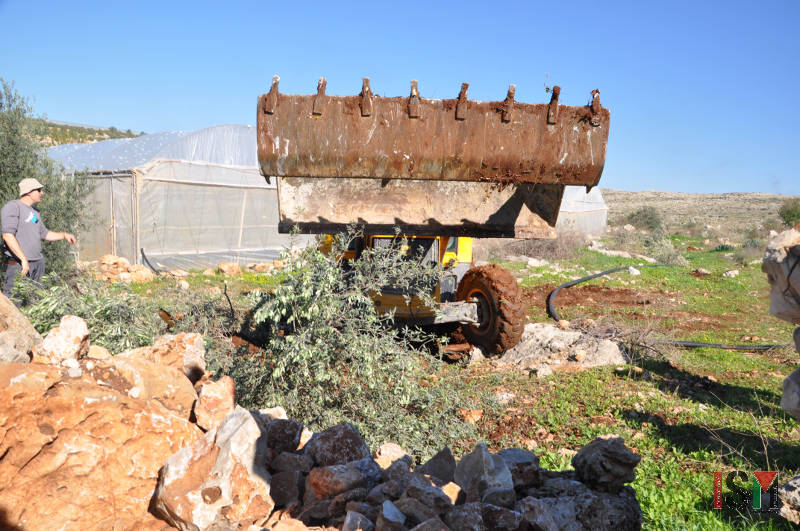Tag: Area C
-
Israeli forces uproot trees and destroy greenhouses in Kafa district
8th of December 2015 | International Solidarity Movement, Tulkarm Team | Kafa district, occupied Palestine On Tuesday, Israeli forces entered the village of Kafa in the outskirts of occupied Tulkarm. Within a few hours, they uprooted over 150 olive trees, 30 lemon trees and demolished four greenhouses from the land of the Esmail family. Even…
-
Olive tree planting in Kafr ad Dik
7th February 2015 | International Solidarity Movement, Nablus Team | Kafr ad Dik, Occupied Palestine On the morning of February 5, ISM volunteers travelled with around 50 Palestinian activists from the Salfit area to the village of Kafr ad Dik to take part in an olive tree planting action organised by the Joint Council of Salfit…
-
Israeli army demolish a house in the Salfit village of Deir Ballut
29th November 2013 | International Solidarity Movement, Nablus Team | Deir Ballut, Occupied Palestine On Thursday morning at five am, the Israeli army demolished a house under construction, and left the area before the owner Ghaneem Mahmoud Abdullah Al-Karim or other villagers were able to arrive at the scene. It is believed that the Israeli…



